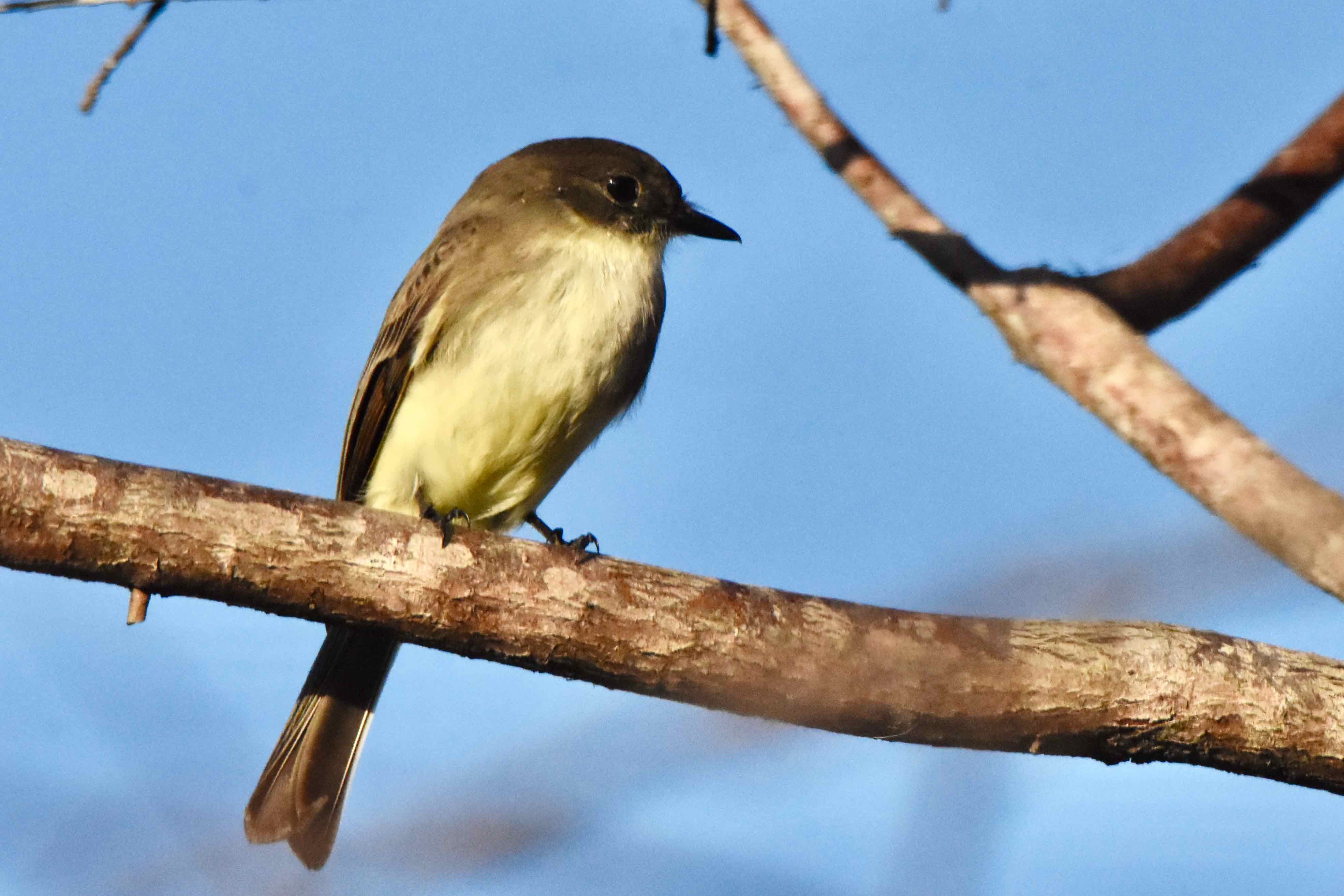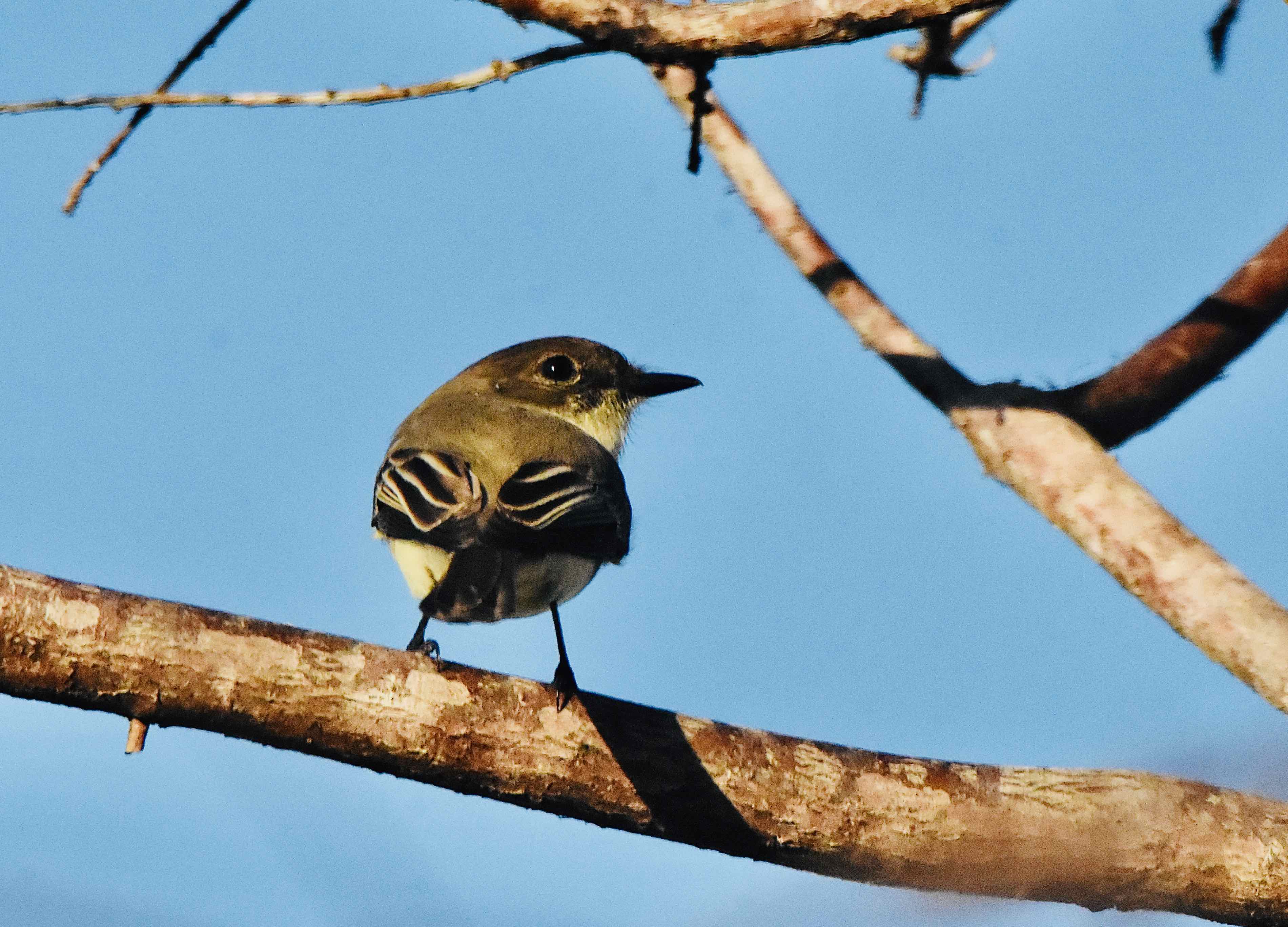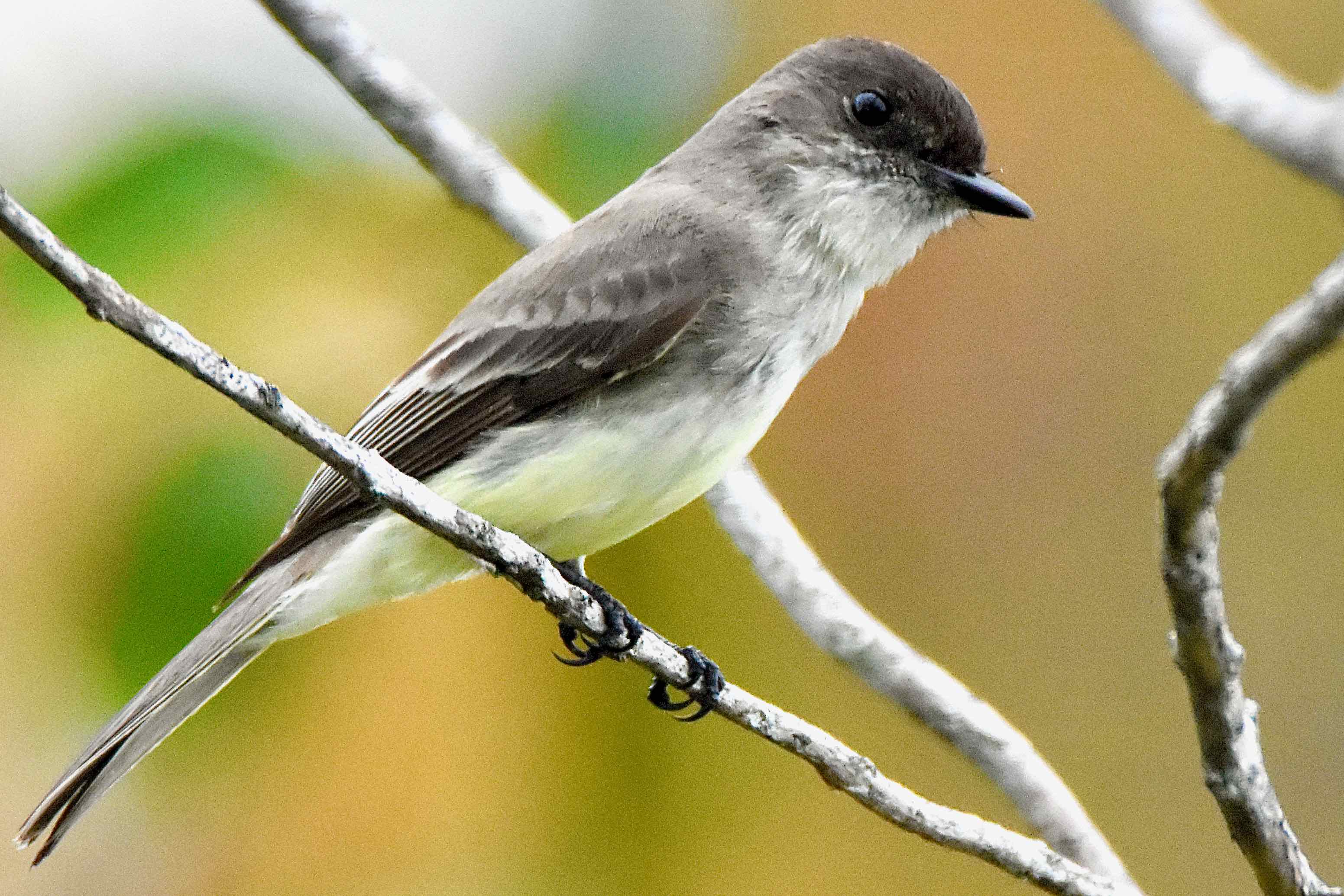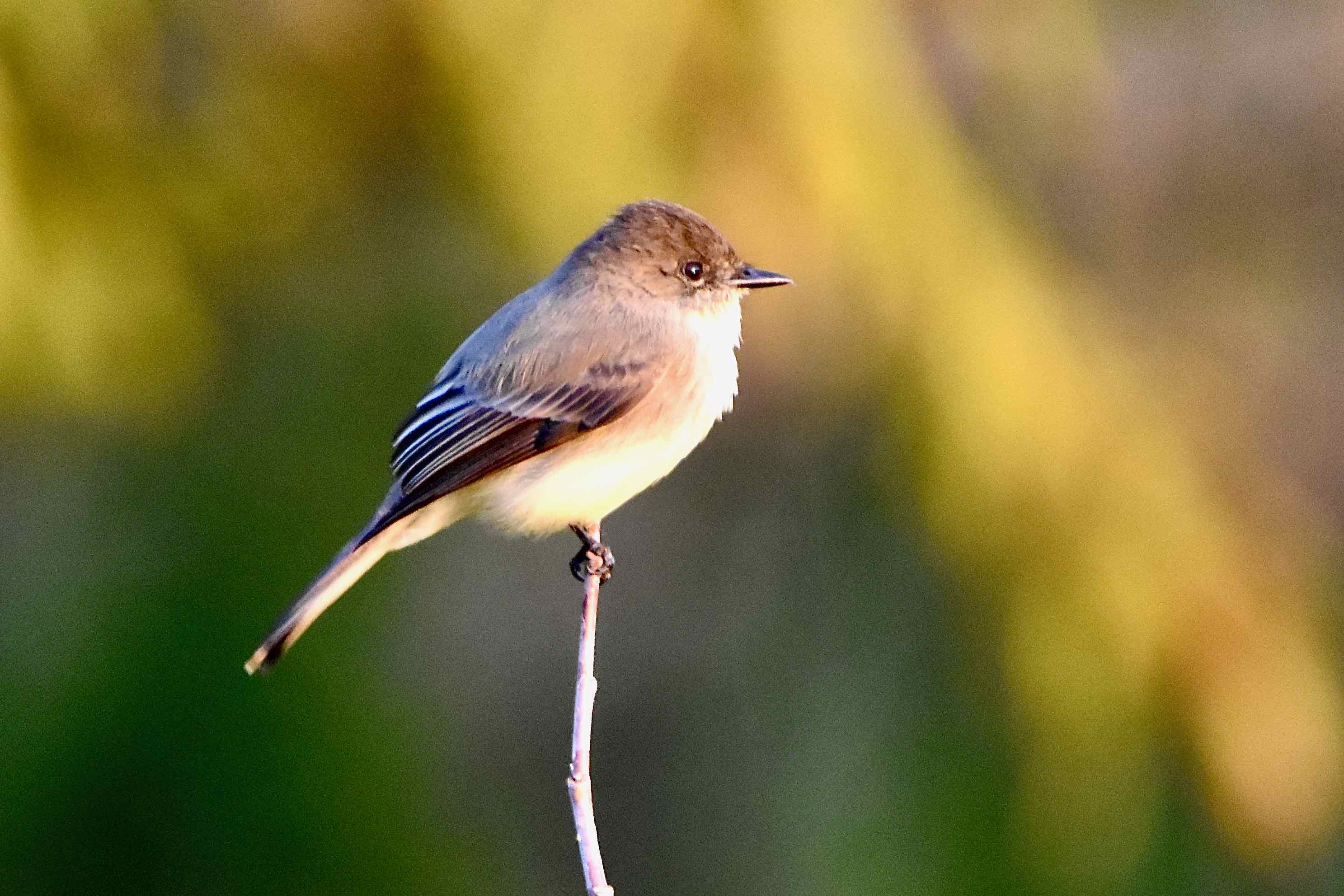
Eastern phoebe, photographed at Pondhawk Natural Area, Boca Raton, Palm Beach County, in February 2018.
In Greek mythology, Phoebe is one of the original Titans, the daughter of Uranus and Gaia. The word itself means bright and radiant, qualities pretty much the opposite of the eastern phoebe. So what does any of this have to do with how the eastern phoebe got its name? Absolutely nothing.
Instead, the name comes from the call these birds make: FEE-BEE. Unromantic, but descriptively accurate. Sort of like the killdeer, which couldn't harm Bambi even if it wanted to, but does make the sound KILL-DEER. Scientifically, the eastern phoebe is known as Sayornis phoebe, and is a member of Tyrannidae, the tyrant flycatcher family. It's the largest and most diverse bird family in the world, with members found in almost all of the Western Hemisphere.
Eastern phoebes are mostly migratory birds, breeding during the summer in Canada's far north and most of the eastern United States, traveling south into Florida, Mexico and parts of the Caribbean to spend the winter. Generally, they are found year-round in the Southeast but north of Florida; in recent decades, however, there have been a few eastern phoebes found nesting as far south as Everglades National Park. There are also records of phoebes nesting in the Panhandle as far back the late 1980s and early '90s. Most, however, arrive here in September and October, and return north in March and April.
Most members of Tyrannidae are on the drab side, and the eastern phoebe is no exception. Eastern phoebes are mostly dull brown on top, with a grayish-white chest and belly that might show a hint of yellow. Eastern phoebes are slightly larger than a warbler, with a body length of about 7 inches and a wingspan that approaches a foot. The bill is flat and short, perfect for catching its favorite food: bugs, including such delights as ticks and millipedes. There are a number of look-alikes among it's cousins, but, generally speaking, they're not commonly seen in this part of the country.
They'll also down a few seeds and fruit. In winter, they're most likely to be found along the edges of forests and in openings. They're often seen perched in trees, on fences and utility lines.
Eastern phoebe females are the nest builders, and by bird standards, what they build is on the elaborate side, taking as long as two weeks to construct. The nests are made of mud reinforced with grass and moss, and lined with feathers and animal hair. They're built almost exclusively on the sides of old buildings, bridges, culverts and other man-made structures that provide some cover and protection for their offspring. They're one of the few birds that will reuse an old nest, sometimes building new atop the old.
Females lay a clutch of as many as six eggs once or twice a year. They take about two weeks to incubate and once hatched two or three more weeks before they fledge. Males might have two families at the same time, helping to feed both similtaneously.
Pondhawk Natural Area



